LAST month, good mate Ryan Speare and I ventured inland from Brisbane to see if we could get amongst some freshwater action.
Lake Borumba was our destination and is located about two hours’ drive northwest of Brisbane, making it an ideal spot for a weekend away. The campground at Lake Borumba is beautiful. Lush green grass surrounded by towering trees makes for a cool and tranquil spot. It has power, amenities and a small shop for basic needs.
Imbil is a 15-minute drive from the lake and features a pub, Friendly Grocer and cafes, meaning you are able to easily access more supplies. A warning that there is basically no phone reception around here.
We arrived at Lake Borumba on a Wednesday afternoon, and after setting up camp we drove up the hill to launch the boat. The lake was a lot bigger than we had imagined, with trees, lily pads and weed edges making it hard to choose where to start. Quite a lot of people were fishing the deep edges and drop-offs with soft plastics and vibes but I have never had any success with those techniques, so instead stuck with what I knew.
I usually fish tidal areas for bass, targeting where they hide around structure, so at Borumba I initially went to a bay that had snags absolutely everywhere. We were there for about 30 minutes and didn’t get a touch, so I sat down for a minute and thought about what we were doing.
With the sun still fairly high, I knew the fish would be seeking shade. And as a southeasterly wind was blowing, I knew from fishing Lake Monduran that baitfish get pushed with the wind and the predatory fish follow. So I found an edge that had a big lily pad bed all the way along it. The wind was pushing right onto the lily pads and I felt a lot more confident about this location.
Within five casts, Ryan landed his first saratoga, and not long after, we each had a bass hit the deck, which filled us both with confidence. It is definitely worthwhile stopping for a moment and thinking about why you are fishing a particular area. You need to consider the weather, boat traffic, water depth, water temperature and all other factors influencing where the fish will be. We were able to land fish almost instantly just by moving to a bank with a large amount of shade under the lily pads and the wind pushing onto it.
Another hugely important factor to consider is your lure type. When freshwater fishing in the upper Pine Rivers I use a soft plastic with a jig spinner attached, and I normally use a small white paddle tail because this best imitates the mullet that live in the same area. However, at Borumba I noticed a lot of shrimp, bony bream and garfish swimming around on the surface, so we used soft plastics to match.
Ryan used a brown curly tail to imitate a shrimp and I tied on a green and white paddle tail to imitate the bony bream and garfish. Well, the predatory fish smashed both presentations.
Another important factor to consider when fishing a new area is the time. Ryan and I were extremely excited to fish surface right on dark, but in a new area you need to be extremely cautious because fishing the evening bite means you will get back to the boat ramp after dark. I have a built-in GPS in my sounder, so I was confident in getting back safely, but this certainly needs to be considered, especially at Lake Borumba where timber comes out of the water everywhere.
If you are struggling when fishing a new area, it is good to talk to people at the local boat ramp. On Friday afternoon a beautiful Skeeter pulled in. It was decked out with stickers everywhere, advertising sponsorship from Humminbird and so on.
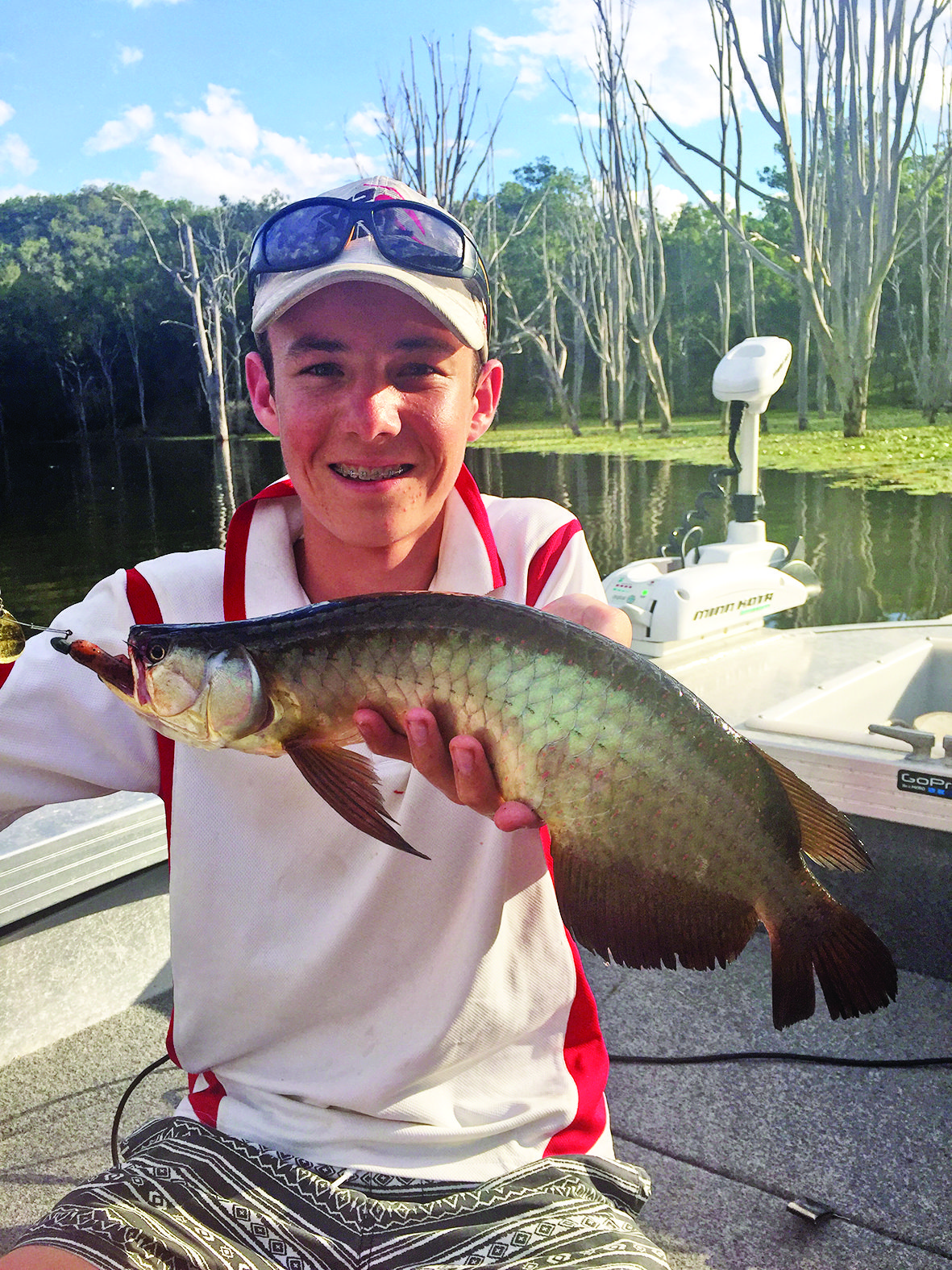
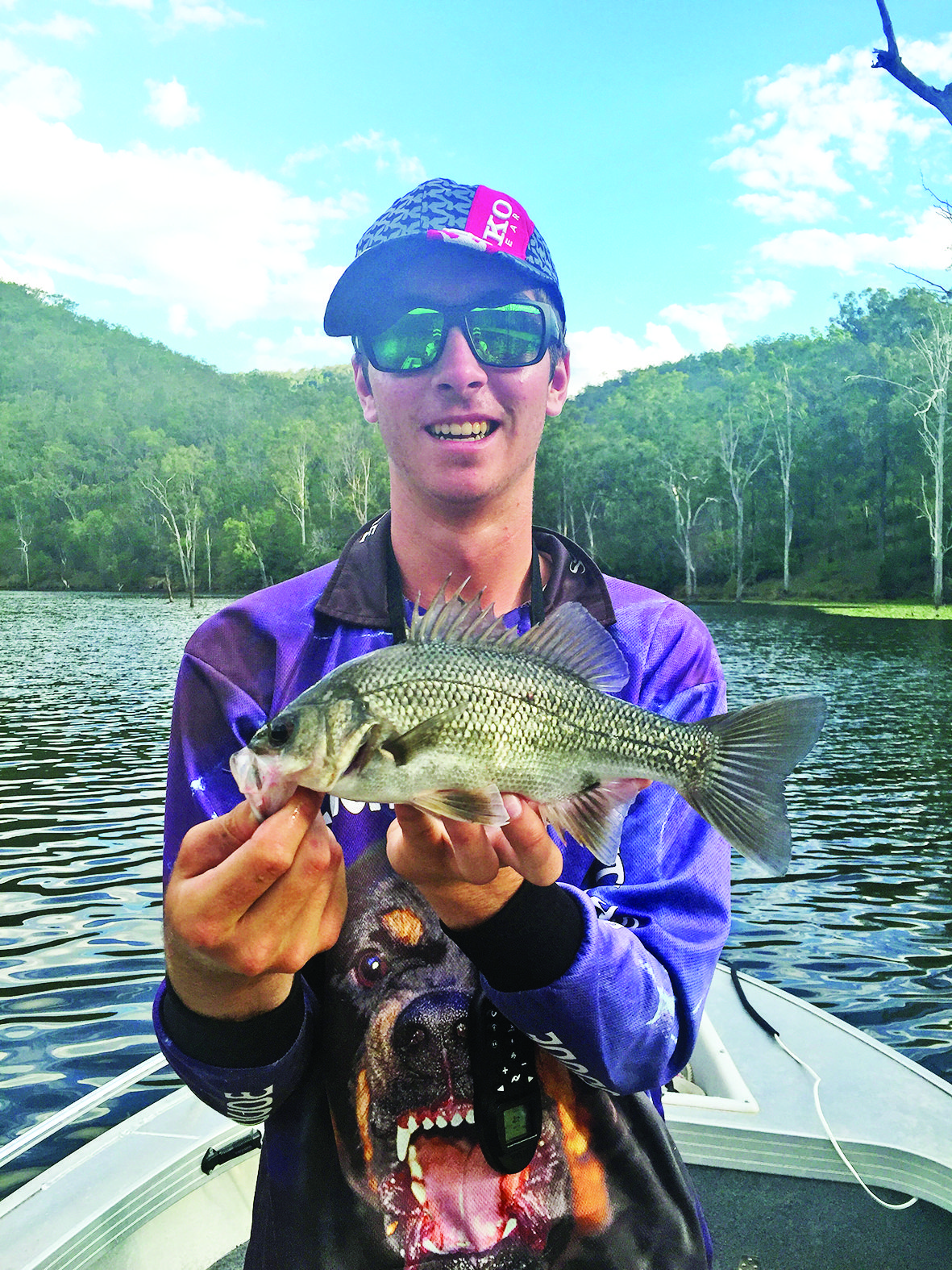
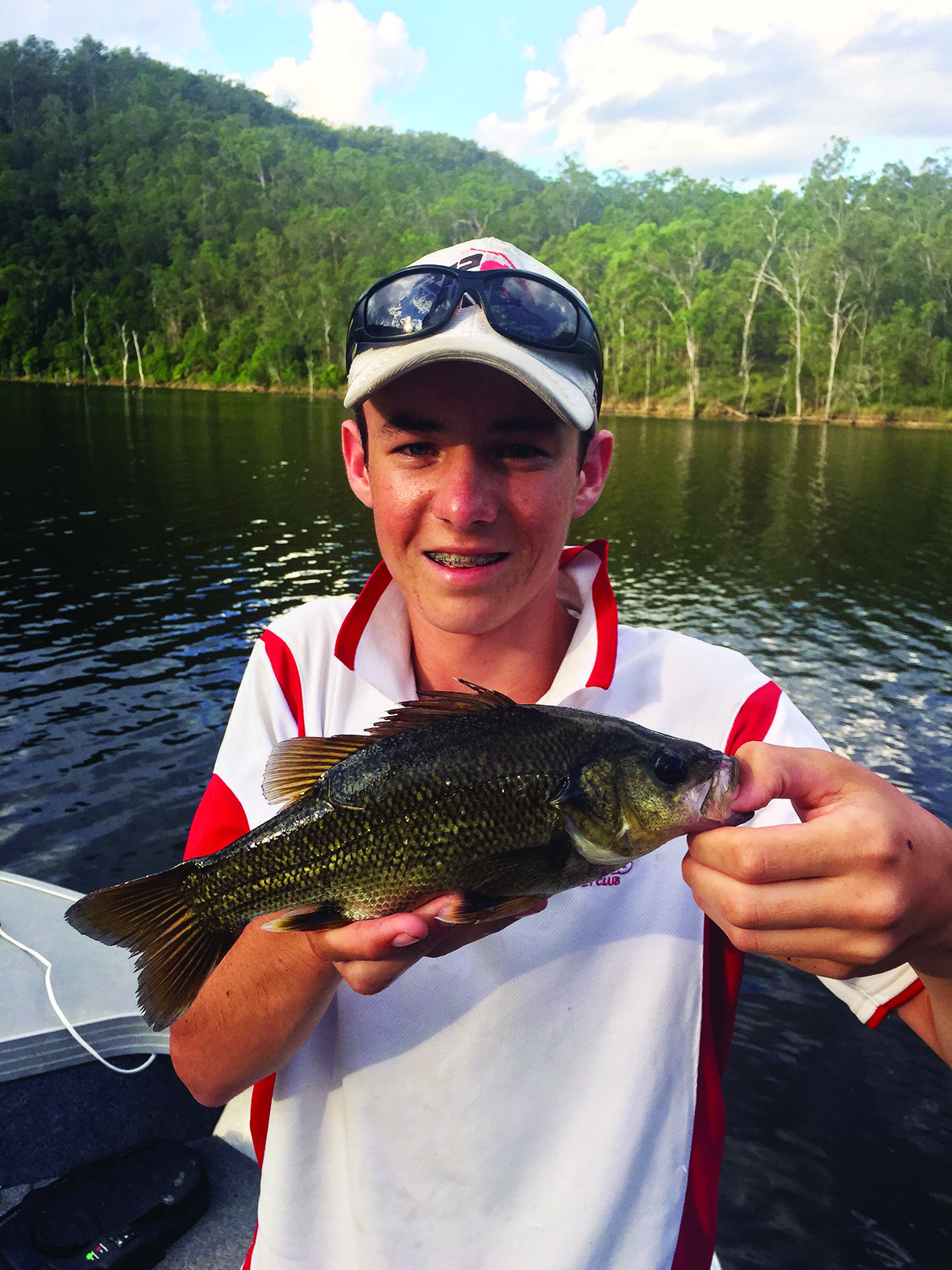
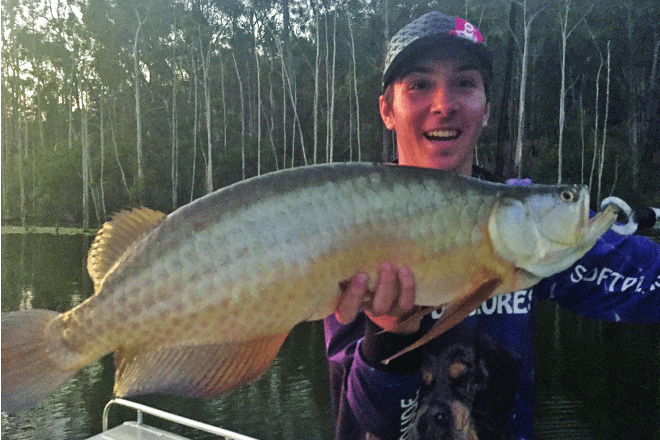
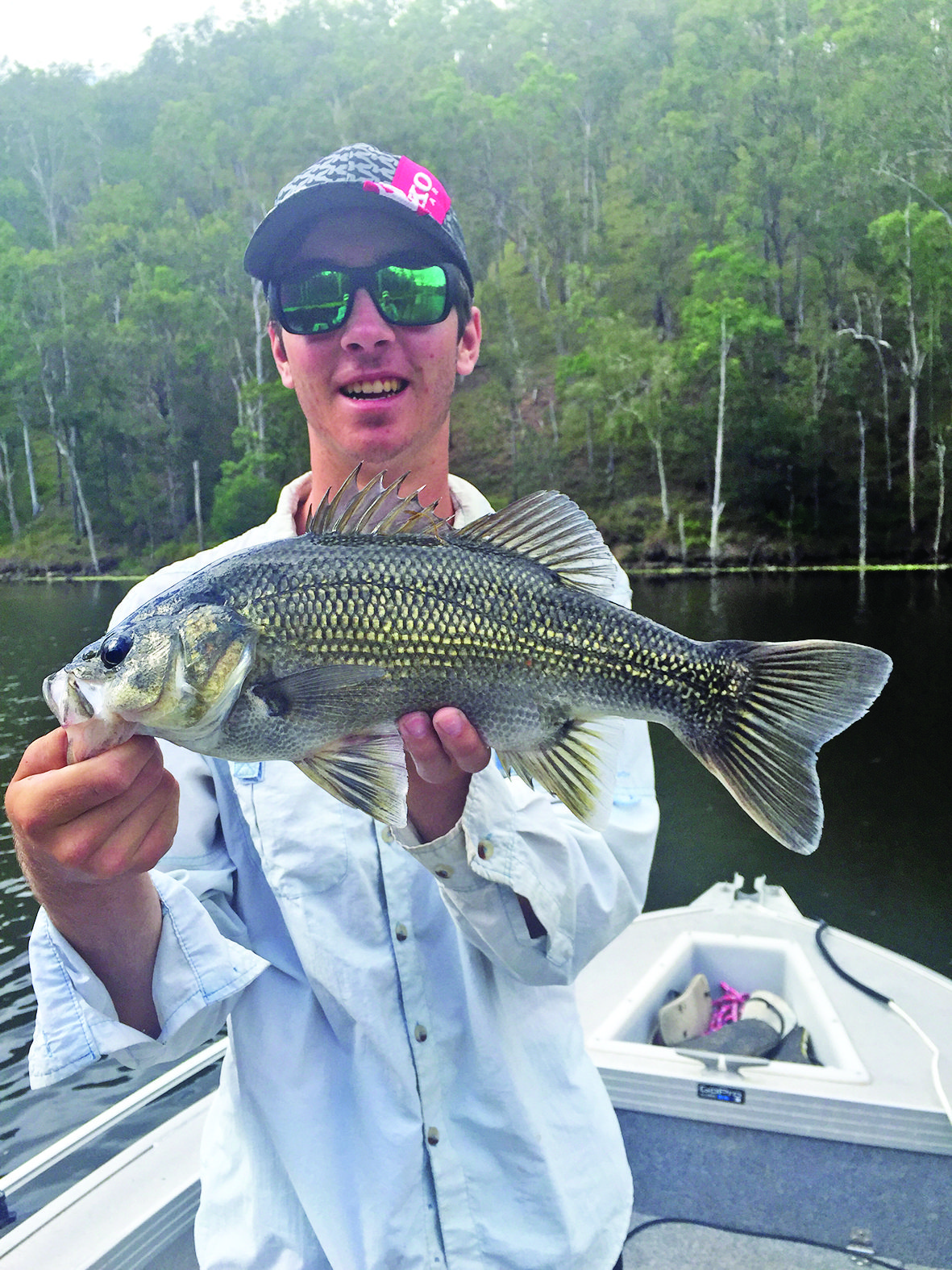
The fisho went on to explain the techniques he had used that day. He didn’t give away any spots but I thought it was great that a fellow fisher was happy to share techniques and tips on how to catch fish in that area, all of which I found extremely helpful.
Another tip I picked up from the trip was understanding how to encourage the bass holding in deeper water to bite. An effective way to do this is to use either a 3/8oz or 1/2oz jig head with a 3” paddle tail plastic.
A long cast is important because it gives the soft plastic more time in the strike zone.
If you can see that the bass are holding around the 6m mark in say 9m of water, drop your plastic down and count how many seconds it takes to hit the bottom. If it takes 15 seconds, you then know that after a long cast you need to wait for about 10 seconds and then start your retrieve. This will ensure the plastic is swimming at the same depth as the fish are holding. A heavier jig head means you can get the plastics to swim parallel to the bottom rather than on a slight upward angle towards your rod tip.
This can be the difference between getting those finicky fish to bite or going home with a doughnut.
Ryan and I were thrilled to end up with six saratoga and nine bass. We hooked up to many more fish but the hard mouths of the saratoga meant we could often not get them back into the boat.
The highlight of the trip was landing a huge 72cm saratoga that smashed a small popper between the trees right on dusk. An epic five-minute fight with some heart-stopping moments left me buggered, but holding this fish was something I will never forget.
I hope you have a successful month on the water, and with the cooler weather here we can look forward to a more settled weather pattern.
To learn more about the saratoga in Lake Borumba, click here!
 Bush ‘n Beach Fishing Magazine Location reports & tips for fishing, boating, camping, kayaking, 4WDing in Queensland and Northern NSW
Bush ‘n Beach Fishing Magazine Location reports & tips for fishing, boating, camping, kayaking, 4WDing in Queensland and Northern NSW










Any tips for catching barramundi at Lake Monduran? Any barramundi closer to Brisbane? Thanks very much!
Hi Jill, Plenty of info on this website for barra at Lake Monduran and other possible hot spots closer to Brisbane. Just search barra or barramundi in the search tap at the top. Cheers, BNB Fishing Team
We visited lake borumba just to look. Thanks for sharing the fishing tips. I will vist it soon
Hi Mark, Thanks for your feedback. Borumba is a pretty dam and well worth a fish – great scenery and some good bass and toga fishing to be had. Let us know how you go when you head up there next. Cheers, BNB Fishing Team